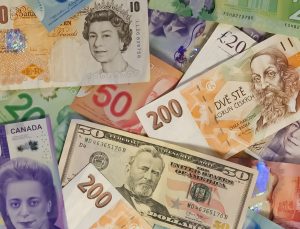Forex margin is the amount of money a trader needs to deposit with their broker in order to open and maintain a position in the foreign exchange market. Margin is essentially a form of collateral that ensures the trader has the funds necessary to cover any potential losses they may incur while trading. The margin requirement is usually expressed as a percentage of the total position size and can vary depending on the broker’s policies, the currency pair being traded, and the market conditions.
Calculating Forex Margin
Calculating forex margin requires a basic understanding of the concept of leverage, which is the practice of borrowing money to increase the size of a trade. Leverage enables traders to control larger positions with a smaller amount of capital, thereby amplifying their potential profits (and losses) in the process.
The amount of leverage a trader can use depends on their account balance, the broker’s requirements, and the regulatory environment in which they operate. In the United States, for example, the maximum leverage allowed for retail traders is 50:1 for major currency pairs and 20:1 for minor and exotic pairs, while in Europe, the maximum leverage is 30:1 for all currency pairs.
To calculate the forex margin requirement, traders need to take into account the following factors:
1. The currency pair being traded
Different currency pairs have different margin requirements due to their volatility and liquidity. As a general rule, major currency pairs such as EUR/USD, GBP/USD, and USD/JPY tend to have lower margin requirements than minor or exotic pairs like USD/TRY, USD/ZAR, or EUR/HUF.
2. The position size
The position size refers to the amount of currency being traded. It is usually measured in lots, which are standardized units of currency. The standard lot size for most forex pairs is 100,000 units, but traders can also trade mini-lots (10,000 units) or micro-lots (1,000 units) depending on their account size and risk tolerance.
3. The leverage ratio
The leverage ratio determines how much a trader can borrow from their broker to open a position. For example, if the leverage is 50:1, a trader can control a position worth $50,000 with a margin deposit of $1,000.
4. The margin requirement
The margin requirement is the percentage of the position size that a trader needs to deposit as collateral. For example, if the margin requirement is 2%, and the position size is $100,000, the trader needs to deposit $2,000 as margin.
The formula for calculating forex margin is as follows:
Margin = (Position Size x Margin Requirement) / Leverage
For example, let’s say a trader wants to buy 1 standard lot (100,000 units) of EUR/USD at a price of 1.2000. The margin requirement for this pair is 2%, and the leverage is 50:1.
Position Size = 100,000 units
Margin Requirement = 2%
Leverage = 50:1
Margin = (100,000 x 0.02) / 50 = $40
This means that the trader needs to deposit $40 as margin to open this position. If the trader’s account balance falls below this amount, the broker will automatically close the position to prevent further losses.
Managing Forex Margin
Forex margin is a double-edged sword that can amplify both profits and losses. While leverage enables traders to make larger profits with a smaller amount of capital, it also increases the risk of losing more than the initial investment. Therefore, it is essential for traders to manage their margin wisely to avoid margin calls and potential losses.
Here are some tips for managing forex margin:
1. Understand the risks
Before trading forex, it is important to understand the risks involved and the impact of leverage on your account. It is recommended to start with a demo account to practice trading strategies and get familiar with the platform before trading with real money.
2. Use appropriate leverage
Using excessive leverage can lead to margin calls and potential losses. It is important to use appropriate leverage based on your account size, risk tolerance, and trading strategy. As a general rule, it is recommended to use a leverage ratio of no more than 5:1.
3. Monitor margin levels
Traders should monitor their margin levels regularly to ensure they have enough funds to cover potential losses. It is recommended to keep a buffer of at least 20% above the minimum margin requirement to avoid margin calls.
4. Use stop-loss orders
Stop-loss orders are essential risk management tools that can help limit potential losses. Traders should use stop-loss orders to automatically close positions if the market moves against them beyond a certain threshold.
In conclusion, forex margin is a critical aspect of trading that traders need to understand and manage effectively. By calculating the margin requirement correctly and using appropriate leverage, traders can minimize the risk of margin calls and potential losses while maximizing their potential profits.






